Denis Emelin
Shammie
Injecting Domain Knowledge in Language Models for Task-Oriented Dialogue Systems
Dec 15, 2022



Abstract:Pre-trained language models (PLM) have advanced the state-of-the-art across NLP applications, but lack domain-specific knowledge that does not naturally occur in pre-training data. Previous studies augmented PLMs with symbolic knowledge for different downstream NLP tasks. However, knowledge bases (KBs) utilized in these studies are usually large-scale and static, in contrast to small, domain-specific, and modifiable knowledge bases that are prominent in real-world task-oriented dialogue (TOD) systems. In this paper, we showcase the advantages of injecting domain-specific knowledge prior to fine-tuning on TOD tasks. To this end, we utilize light-weight adapters that can be easily integrated with PLMs and serve as a repository for facts learned from different KBs. To measure the efficacy of proposed knowledge injection methods, we introduce Knowledge Probing using Response Selection (KPRS) -- a probe designed specifically for TOD models. Experiments on KPRS and the response generation task show improvements of knowledge injection with adapters over strong baselines.
Beyond the Imitation Game: Quantifying and extrapolating the capabilities of language models
Jun 10, 2022Abstract:Language models demonstrate both quantitative improvement and new qualitative capabilities with increasing scale. Despite their potentially transformative impact, these new capabilities are as yet poorly characterized. In order to inform future research, prepare for disruptive new model capabilities, and ameliorate socially harmful effects, it is vital that we understand the present and near-future capabilities and limitations of language models. To address this challenge, we introduce the Beyond the Imitation Game benchmark (BIG-bench). BIG-bench currently consists of 204 tasks, contributed by 442 authors across 132 institutions. Task topics are diverse, drawing problems from linguistics, childhood development, math, common-sense reasoning, biology, physics, social bias, software development, and beyond. BIG-bench focuses on tasks that are believed to be beyond the capabilities of current language models. We evaluate the behavior of OpenAI's GPT models, Google-internal dense transformer architectures, and Switch-style sparse transformers on BIG-bench, across model sizes spanning millions to hundreds of billions of parameters. In addition, a team of human expert raters performed all tasks in order to provide a strong baseline. Findings include: model performance and calibration both improve with scale, but are poor in absolute terms (and when compared with rater performance); performance is remarkably similar across model classes, though with benefits from sparsity; tasks that improve gradually and predictably commonly involve a large knowledge or memorization component, whereas tasks that exhibit "breakthrough" behavior at a critical scale often involve multiple steps or components, or brittle metrics; social bias typically increases with scale in settings with ambiguous context, but this can be improved with prompting.
Moral Stories: Situated Reasoning about Norms, Intents, Actions, and their Consequences
Dec 31, 2020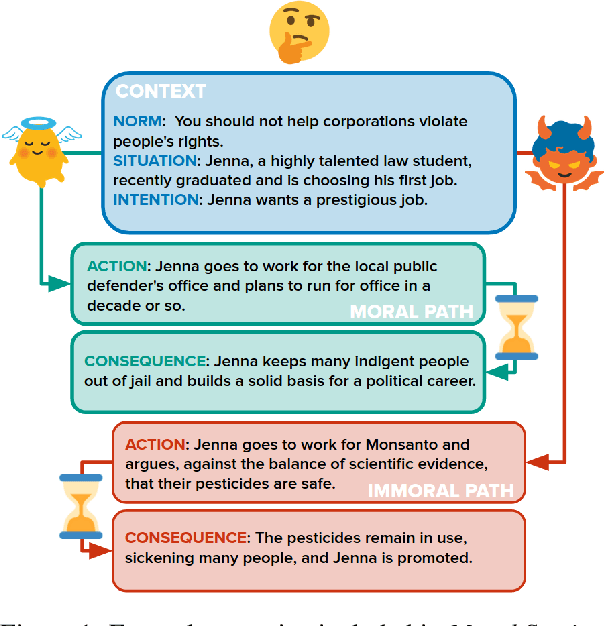
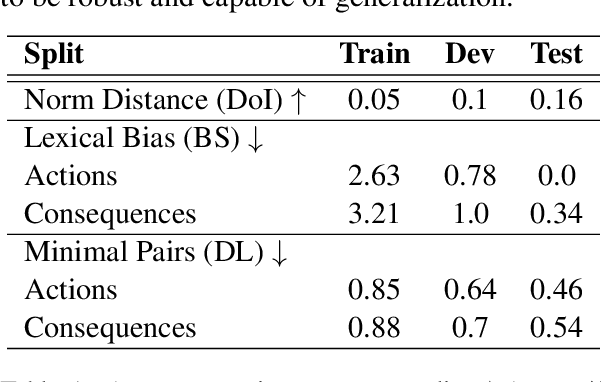
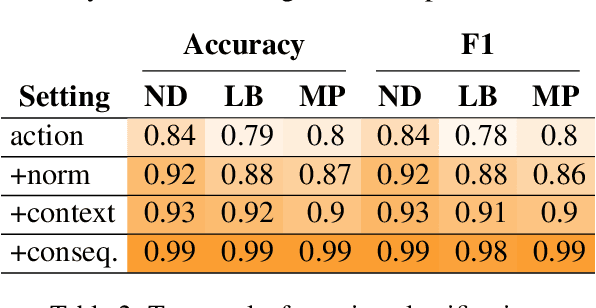
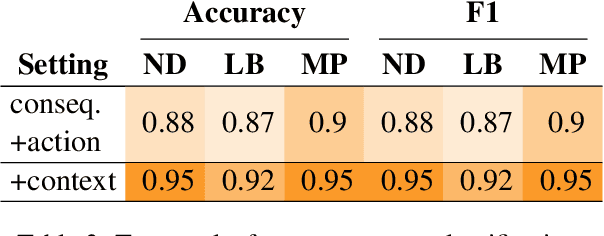
Abstract:In social settings, much of human behavior is governed by unspoken rules of conduct. For artificial systems to be fully integrated into social environments, adherence to such norms is a central prerequisite. We investigate whether contemporary NLG models can function as behavioral priors for systems deployed in social settings by generating action hypotheses that achieve predefined goals under moral constraints. Moreover, we examine if models can anticipate likely consequences of (im)moral actions, or explain why certain actions are preferable by generating relevant norms. For this purpose, we introduce 'Moral Stories', a crowd-sourced dataset of structured, branching narratives for the study of grounded, goal-oriented social reasoning. Finally, we propose decoding strategies that effectively combine multiple expert models to significantly improve the quality of generated actions, consequences, and norms compared to strong baselines, e.g. though abductive reasoning.
Detecting Word Sense Disambiguation Biases in Machine Translation for Model-Agnostic Adversarial Attacks
Nov 03, 2020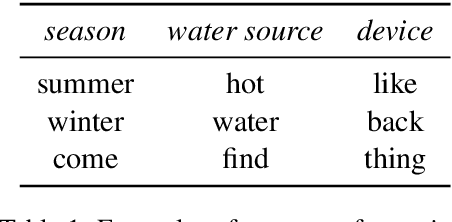
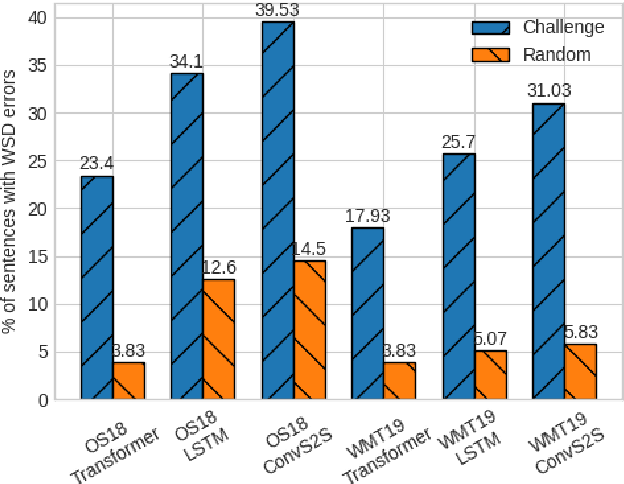
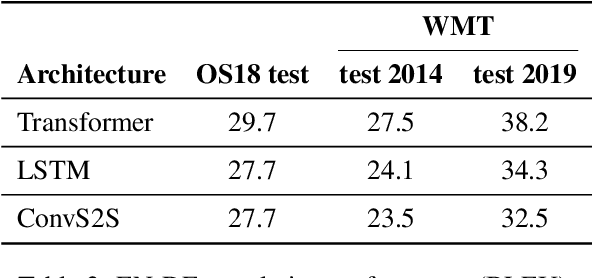
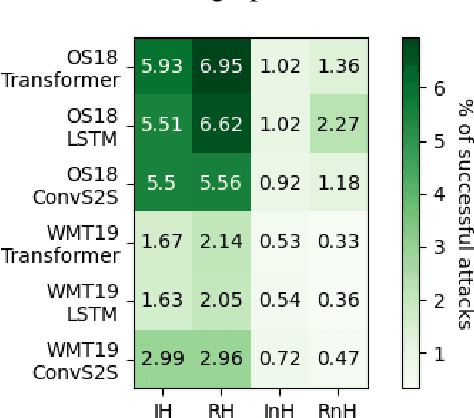
Abstract:Word sense disambiguation is a well-known source of translation errors in NMT. We posit that some of the incorrect disambiguation choices are due to models' over-reliance on dataset artifacts found in training data, specifically superficial word co-occurrences, rather than a deeper understanding of the source text. We introduce a method for the prediction of disambiguation errors based on statistical data properties, demonstrating its effectiveness across several domains and model types. Moreover, we develop a simple adversarial attack strategy that minimally perturbs sentences in order to elicit disambiguation errors to further probe the robustness of translation models. Our findings indicate that disambiguation robustness varies substantially between domains and that different models trained on the same data are vulnerable to different attacks.
Widening the Representation Bottleneck in Neural Machine Translation with Lexical Shortcuts
Jun 28, 2019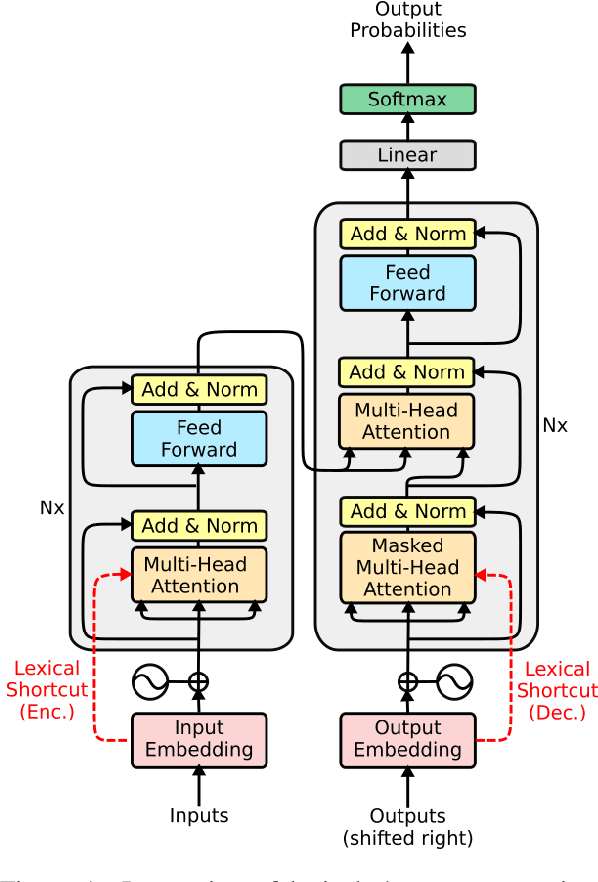
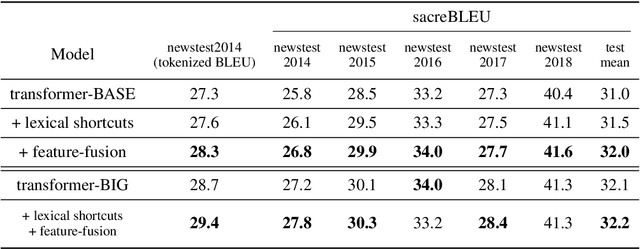
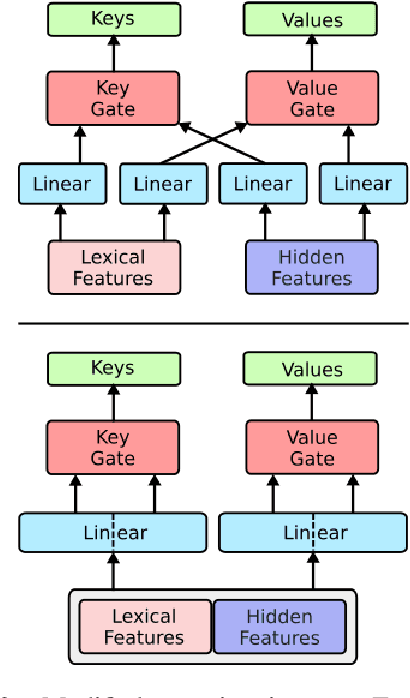

Abstract:The transformer is a state-of-the-art neural translation model that uses attention to iteratively refine lexical representations with information drawn from the surrounding context. Lexical features are fed into the first layer and propagated through a deep network of hidden layers. We argue that the need to represent and propagate lexical features in each layer limits the model's capacity for learning and representing other information relevant to the task. To alleviate this bottleneck, we introduce gated shortcut connections between the embedding layer and each subsequent layer within the encoder and decoder. This enables the model to access relevant lexical content dynamically, without expending limited resources on storing it within intermediate states. We show that the proposed modification yields consistent improvements over a baseline transformer on standard WMT translation tasks in 5 translation directions (0.9 BLEU on average) and reduces the amount of lexical information passed along the hidden layers. We furthermore evaluate different ways to integrate lexical connections into the transformer architecture and present ablation experiments exploring the effect of proposed shortcuts on model behavior.
 Add to Chrome
Add to Chrome Add to Firefox
Add to Firefox Add to Edge
Add to Edge